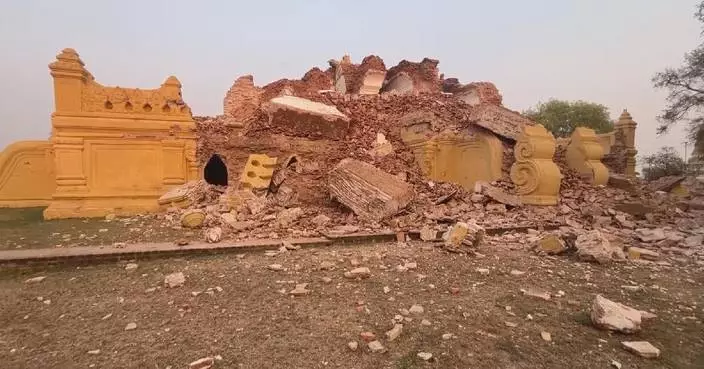Thanks to the joint efforts of local authorities and enterprises in Ningxia, the booming wine industry has not only brought immense possibilities for economic development in the province, but also propelled the ecological conservation.
At the eastern foot of the Helan Mountain in Ningxia Hui Autonomous Region of northwest China, the environment, once plagued by water and soil loss and overexploitation, now has seen a substantial improvement, presenting a splendid landscape.
Covered by rows of grapevines, the area is brimming over with vitality, attracting throngs of visitors to enjoy the picturesque scenery and the full-bodied wine.
Over the past couples of years, a string of comprehensive measures, such as the construction of high-standard vineyard and the planting of shelter forest, has successfully turned the wasteland of more than 25,000 hectares into a green oasis.
"We have built vineyards and planted more than 30,000 trees, so the sight is filled with green. As a result, Many birds have also settled down in the waters here. So I feel very good every day," said Liu Xi, a staff member of a winery.
"Studies have shown that the carbon storage per hectare of vineyards here is about 50 tons, which has significant ecological value and ecological functions," said Wen Xuehui, deputy director at the management committee of the Wine Industrial Park at the Eastern Foot of Helan Mountain in Ningxia.
In addition to the booming wine industry, local vineyards have also pooled their strengths and taken a slew of measures to conduct ecological protection, realizing the coordinated development of economy and ecology.
A survey by the College of Enology, Northwest Agriculture and Forestry University, shows that 139 species of higher plants had been found and 95 species of insects collected from one of the vineyards alone.
"The biological diversity has been improved. Some wild animals like snow leopard that once disappeared in the eastern foot of the Helan Mountain are now settling down here again," said Wen.
Industrial development and ecological environment improvement have together put the wine-producing region under the global spotlight, drawing customers from all over the world to build partnership with local enterprises.
Local authorities in Ningxia have vowed greater efforts to make the business environment even better so as to deepen cooperation with their partners.
"On the one hand, we have intensified the promotion of red wine produced in Ningxia and improved its brand awareness and reputation by holding wine culture and tourism expo. On the other hand, we've identified the unique characteristics and international sales positioning of our wine, and formulated targeted investment policies to attract internationally renowned wine producers, promoters and dealers to Ningxia to start a business and share the development dividend," said Wu Yujun, head of the Foreign Investment Office under the Department of Commerce of Ningxia Hui Autonomous Region.

China's Ningxia strikes balance between Wine industry development and ecological conservation
















































